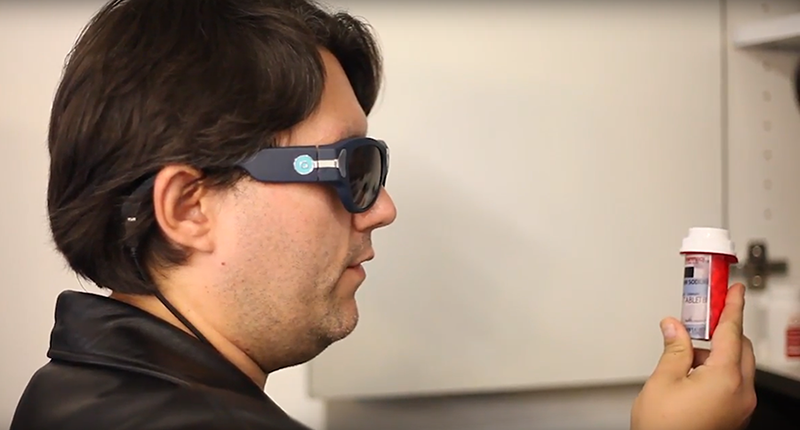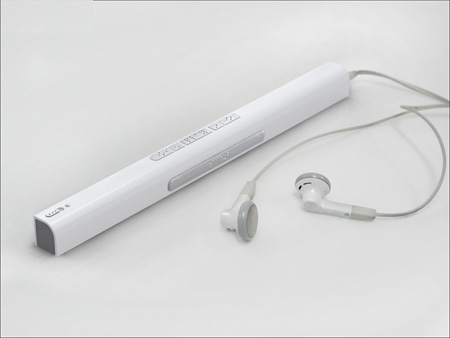Enhance Accessibility with Braille Devices and Notetakers
Enhance Accessibility with Braille Devices and Notetakers
Blog Article
Discover Innovative Devices Designed for the Visually Damaged
The development of ingenious tools for the visually damaged stands for a substantial innovation in accessibility and independence. Technologies such as clever glasses with AI capabilities and mobile applications designed to supply auditory summaries are improving daily experiences for users.
Smart Glasses for Navigating

Smart glasses created for navigation are transforming the way visually damaged individuals interact with their setting. These innovative tools utilize a combination of electronic camera technology, expert system, and auditory comments to supply real-time details regarding environments. By employing obstacle discovery systems, smart glasses can alert users to prospective threats, making it possible for safer wheelchair in both unknown and acquainted setups.
The integration of GPS innovation better boosts navigation capabilities, allowing customers to receive auditory directions as they move. This hands-free method not only promotes independence but additionally equips visually impaired individuals to navigate metropolitan landscapes with enhanced self-confidence. Furthermore, several smart glasses are equipped with functions that determine landmarks and road signs, giving contextual information that boosts the customer experience.
Furthermore, the growth of these tools is continuously progressing, with firms working to boost the accuracy of things recognition and expand the series of navigational attributes. As smart glasses come to be much more available and affordable, they hold the possible to significantly change life for aesthetically impaired individuals. Inevitably, these cutting-edge tools represent a critical action toward inclusivity, offering enhanced movement and a greater sense of autonomy for individuals navigating the globe around them.

Mobile Application for Daily Living
Exactly how can mobile applications improve the day-to-days live of visually damaged people? Mobile applications are changing the means visually damaged users browse their settings, take care of daily jobs, and gain access to information. These applications offer necessary assistance via various functionalities, fostering independence and enhancing quality of life.
Several ingenious mobile apps are created particularly for daily living. Apps like Be My Eyes connect aesthetically damaged customers with sighted volunteers using video telephone calls, allowing them to receive real-time assistance with jobs such as checking out labels or navigating strange rooms. Likewise, Seeing AI, created by Microsoft, utilizes expert system to explain surroundings, checked out message, and determine things, successfully transforming a smart device into an effective tool for daily support.
In addition, navigating applications tailored for the aesthetically damaged, such as Aira and BlindSquare, offer audio-based instructions and environmental details, allowing users to traverse their surroundings safely and confidently. Past navigation and instant assistance, mobile apps also support company and job monitoring, with attributes that assist individuals establish suggestions, develop order of business, and track consultations. In summary, mobile applications serve as vital sources, empowering aesthetically damaged individuals to lead even more independent and fulfilling lives.
Wearable Technologies for Assistance
Empowerment with innovation is significantly evident in the realm of wearable gadgets developed to help visually impaired individuals. These ingenious devices integrate perfectly into day-to-day life, improving navigation and supplying important responses to individuals. Clever glasses outfitted with cams can read and recognize faces message aloud, allowing users to communicate more confidently in professional and social setups.
An additional remarkable advancement is the usage of haptic responses systems in wearable devices. These systems make use of vibrations or other responsive signals to share information about the user's setting, such as challenges or changes in surface, enhancing movement and safety and security. Wearable modern technologies likewise consist of wristbands that connect to smart devices, informing customers to notifications with refined vibrations, thus improving connectivity without dependence on visual signs.
As these modern technologies continue to develop, they are not only boosting freedom for aesthetically impaired people yet also cultivating a greater feeling of addition in society. By connecting the gap in between challenges dealt with in daily living and the capacity for freedom, wearable innovations function as essential devices in the mission for equality and empowerment for those with visual problems.
Audio Summary Devices
Sound summary devices play a vital function in boosting access for aesthetically damaged individuals, providing them with the capability to engage with aesthetic media. Screen readers for the blind. These tools use narrated descriptions of key aesthetic elements in films, tv programs, and live performances, ensuring that individuals can fully comprehend the context and emotions conveyed with visuals
Sound description can be integrated right into various systems, including streaming services, movie theater testings, and live theater. Lots of preferred streaming services currently consist of audio description as an access attribute, enabling customers to select it conveniently. In enhancement to conventional media, specialized apps also exist, offering audio descriptions for art events, galleries, and other cultural occasions.
The effectiveness of audio description hinges on the ability of the storytellers, who need to convey visual details succinctly without diminishing the initial audio. Innovations in this area are additionally leading the method for even more personalized experiences, where individuals can change the level of detail and pacing according to their choices.
Braille Innovations and Instruments
Braille technologies and devices have significantly transformed the way aesthetically damaged individuals interact with text and details. Modern innovations have led to the advancement of versatile devices that boost proficiency and self-reliance among customers. Especially, Braille display modern technologies have actually evolved, enabling dynamic reading experiences. These gadgets convert digital text into Braille, allowing customers to access a vast selection of details on smartphones, computers, and tablet computers.
Moreover, mobile Braille notetakers incorporate typical Braille input with modern capabilities, facilitating note-taking, scheduling, and record modifying on the move. Smart glasses for the visually impaired. These small gadgets usually feature text-to-speech capabilities, linking the blog here space between Braille and auditory information
On top of that, cutting-edge Braille printers have actually emerged, enabling users to create Braille tags, files, and academic products effectively. This access cultivates greater participation in academic and specialist environments, eventually promoting inclusivity.
In addition, research into clever Braille modern technologies continues to broaden. Devices that include expert system are being explored to give real-time navigating assistance and contextual information, enhancing the individual experience in diverse setups. On the whole, these developments show a dedication to encouraging aesthetically damaged individuals with technology, guaranteeing they can quickly accessibility and engage with the world around them.

Final Thought
The development of cutting-edge devices for the visually impaired substantially improves self-reliance and quality of life. anonymous These innovations not only foster higher addition yet additionally promote autonomy in day-to-day activities, inevitably adding to a much more equitable and accessible society for aesthetically impaired individuals.
As clever glasses end up being more obtainable and cost effective, they hold the potential to considerably change day-to-day life for aesthetically damaged customers. Mobile applications are revolutionizing the method aesthetically impaired individuals browse their settings, take care of day-to-day tasks, and access details. Applications like Be My Eyes link aesthetically damaged individuals with sighted volunteers via video phone calls, allowing them to receive real-time assistance with jobs such as reading labels or browsing unknown areas.Furthermore, navigating apps tailored for the aesthetically impaired, such as Aira and BlindSquare, use audio-based instructions and ecological info, making it possible for users to visit our website traverse their surroundings safely and with confidence.The advancement of innovative tools for the visually damaged considerably enhances independence and quality of life.
Report this page